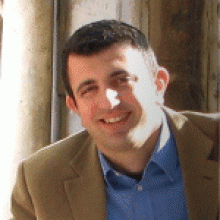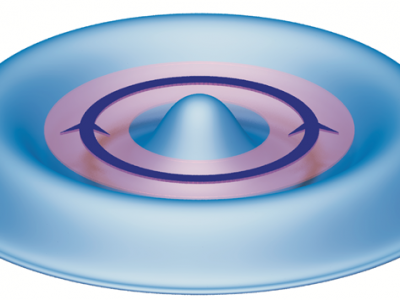
Pavlos Savvidis has received the B.Sc. in Physics of the University of Athens. He obtained his doctoral degree in Experimental Condensed Matter and Laser Physics from the University of Southampton in 2001 creating the first polariton amplifier. From 2002 to 2004 he was DARPA funded post-doctoral associate at the Department of Physics at Santa Barbara, USA, working on the terahertz dynamics in semiconductor nanostructures and Bloch Oscillators. In 2004 he was appointed Assistant Professor at the Department of Materials Science and Technology of the University of Crete. He is affiliated researcher of the Microelectronics Research Group at FO.R.T.H.-Institute of Electronic Structure and Laser (I.E.S.L.) since 2004. He was awarded 1 year Leverhulme Fellowship in 2014 to work as visiting Professor at Cavendish Labs, University of Cambridge. His work on polaritonic devices, appeared in high impact journals such as Nature, Science, Nature Physics, Nature Comm and PRLs. The results of many of these works were featured in News & Views and Perspectives sections of Nature and Science journals respectively.
Education
- 2001, Ph.D. in Physics, University of Southampton, Southampton, UK
- 1998, B.Sc. in Physics, University of Athens, Athens, Greece
Career
- 08/2004 - today, Assist. Prof. Dept of Material Science & Technology, University of Crete, Greece
- 03/2012 - 05/2012, Marie Currie Senior Researcher Physics Department, University of Southampton, UK
- 04/2011 - 06/2011, Marie Currie Senior Researcher Physics Department, University of Southampton, UK
- 06/2008 - 10/2008, Visiting Professor Cavendish Labs, Cambridge University, UK
- 03/2004 - 06/2004, Postdoctoral Research Fellow, University of Southampton, Southampton, UK
- 01/2002 - 11/2003, Postdoctoral Research Fellow University of California, Santa Barbara, USA
Interests
- Novel polariton based optoelectronic devices
- Nonliear properties of hybrid organic-inorganic semiconductor microcavities
- Polariton quantum fluids and circuits
- Polariton condensate lattices for quantum simulation





